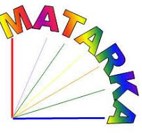Relationship between size and abundance measures of fruits and seeds for the herbaceous annual liana wild cucumber (Echinocystis lobata)
Abstract
The annual herbaceous liana wild cucumber (Echinocystis lobata (Michx.) Torr. et Gray), which is native to North America, is a transformer invasive plant in Hungary, mainly spreading along waterways. Its fruits usually have 4 seeds, but there are also fruits with 1, 2, 3, 5 and 6 seeds. I investigated the relationships between the length of the fruit, the number and average weight of intact seeds per fruit, and the number of aborted seeds per fruit on 834 fruits of E. lobata, which I collected in the floodplain of the Lower Tisza, Hungary. The average length of the fruits was 43.5±6.6 mm, the average number of seeds per fruit was 3.5±1.1. Half (51.6%) of the examined fruits had 4 seeds. The number of fruits with 3 seeds was also considerable (20.9%), but there were few fruits with 1, 2 or 5 seeds (6.0%, 10.3% and 9.2%, respectively). 80.8% of the fruits contained no aborted seeds, 13.8% had one, 3.7% had two, and 1.7% had three aborted seeds. There was a positive correlation between the length of the fruit and the number and average weight of intact seeds per fruit, while a negative correlation appeared between the length of the fruit and the number of aborted seeds. No trade-off between the number and weight of seeds per fruit was detected, moreover, these two variables showed a positive correlation. Based on these results, it seems that the size of the fruit and the number and weight of ripe seeds in E. lobata increase with the improvement of the conditions of fruit formation. This characteristic, as well as the low frequency of aborted seeds, may play a role in the efficient dispersal supporting the invasion success of the species.
References
Bagi I., Böszörményi A. 2006: Süntök. In: Botta-Dukát Z., Mihály B. (szerk.) Biológiai inváziók Magyarországon. Özönnövények II. A KvVM Természetvédelmi Hivatalának Tanulmánykötetei 10., Budapest, pp. 143–170.
Bagi I., Böszörményi A. 2008: Wild cucumber (Echinocystis lobata Torr. et Gray) In: Botta-Dukát Z., Balogh L. (eds) The most important invasive plants in Hungary. Institute of Ecology and Botany, Hungarian Academy of Sciences, Vácrátót, pp. 104–114.
Bagi I., Böszörményi A. 2012: Süntök (Echinocystis lobata Torr. et Gray). In: Csiszár Á. (szerk.) Inváziós növényfajok Magyarországon. Nyugat–magyarországi Egyetem Kiadó, Sopron, pp. 57–61.
Choate H. A. 1940: Dormancy and germination in seeds of Echinocystis lobata. American Journal of Botany 27: 156–160. https://doi.org/10.2307/2436478
Eriksson O. 2000: Seed dispersal and colonization ability of plants – Assessment and implications for conservation. Folia Geobotanica 35: 115–123. https://doi.org/10.1007/BF02803091
Fenesi A., Bus O. 2008: A süntök (Echinocystis lobata) demográfiájának és élőhelypreferenciájának vizsgálata a Túrmenti Természetvédelmi Területen. Aktuális flóra- és vegetációkutatás a Kárpát-medencében VIII. konferencia (Gödöllő, 2008. február 29 – március 2.) előadásainak összefoglalói. Kitaibelia 13(1): 160.
Grime J. P. 1977: Evidence for the existence of three primary strategies in plants and its relevance to ecological and evolutionary theory. The American Naturalist 111(982): 1169–1194. https://doi.org/10.1086/283244
Jávorka S. 1937: Az Echinocystis lobata (Michx.) Torr. et Gray terjedése Magyarországon. Kisebb közlemények. Botanikai Közlemények 34: 118–119.
Kazinczi G., Horváth J., Hunyadi K. 1998: A süntök (Echinocystis lobata Torr. et Gray) csírázásbiológiája és vírusfogékonysága. Növénytermelés 47(6): 645–654.
Király G. (szerk.) 2009: Új magyar füvészkönyv. Magyarország hajtásos növényei. Határozókulcsok. Aggteleki Nemzeti Park Igazgatóság, Jósvafő, 616 pp.
Koenig W. D., Knops J. M. H., Carme, W. J., Sage R. D., 2009: No trade-off between seed size and number in the valley oak Quercus lobata. The American Naturalist 173(5): 682–688. https://doi.org/10.1086/597605
Kostrakiewicz-Gierałt K., Pliszko A., Barabasz-Krasny B., Bomanowska A., Dajdok Z., Gudžinskas Z., Kucharczyk M., Maćkowiak Ł., Majk J., Możdżeń K., Podgórska M., Rasimavičius M., Rewicz A., Szczęśniak E., Wójcik T., Stachurska-Swakoń A. 2022: The relationships of habitat conditions, height level, and geographical position with fruit and seed traits in populations of invasive vine Echinocystis lobata (Cucurbitaceae) in Central and Eastern Europe. Forests 13(2): 256. https://doi.org/10.3390/f13020256
Leishman M. R. 1997: Does the seed size/number trade-off model determine plant community structure? An assessment of the model mechanisms and their generality. Oikos 93: 294–302. https://doi.org/10.1034/j.1600-0706.2001.930212.x
McGinley M. A., Charnov E. L. 1988: Multiple resources and the optimal balance between size and number of offspring. Evolutionary Ecology 2: 77–84. https://doi.org/10.1007/BF02071590
Paul-Victor C., Turnbull L. A. 2009: The effect of growth conditions on the seed size/number trade-off. PLoS ONE 4(9): e6917. https://doi.org/10.1371/journal.pone.0006917
Silvertown J. 1985: Survival, fecundity and growth of wild cucumber, Echinocystis lobata. Journal of Ecology 73(3): 841–849. https://doi.org/10.2307/2260151
Simon T. 1992: A magyarországi edényes flóra határozója. Harasztok – virágos növények. Tankönyvkiadó, Budapest, 892 pp.
Smith C. C., Fretwell S. D. 1974: The optimal balance between size and number of offspring. The American Naturalist 108(962): 499–506. https://doi.org/10.1086/282929
Sonkoly J., Molnár V. A., Török P. 2014: A növényi magtömeg-variabilitás ökológiai háttere és jelentősége. Kitaibelia 19(2): 295–330.
Soó R. 1951: A magyar növényvilág kézikönyve. Magyarország vadontermő és termesztett növényeinek meghatározója, ökológiai és gazdasági útmutatója. II. kötet. Akadémiai Kiadó, Budapest, 640 pp.
Soó R., Kárpáti Z. (szerk.) 1968: Növényhatározó II. Harasztok – virágos növények. Tankönyvkiadó, Budapest, 846 pp.


















